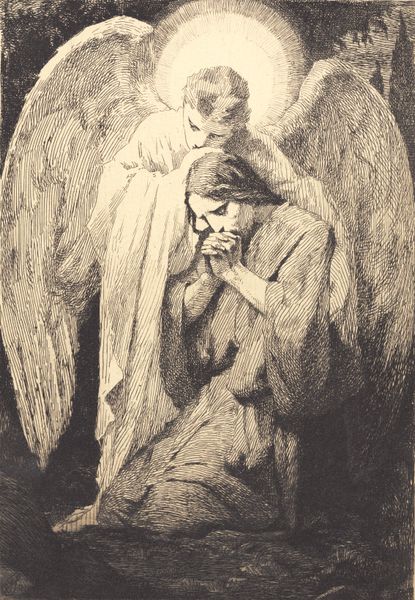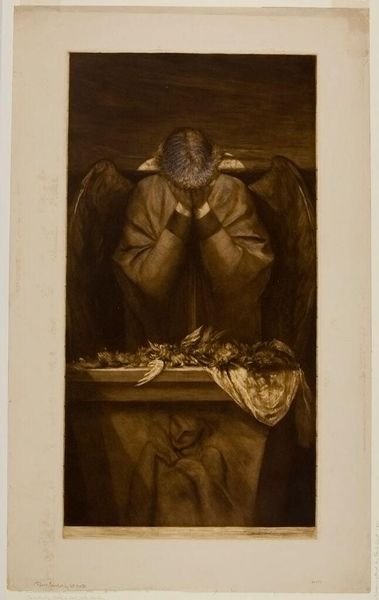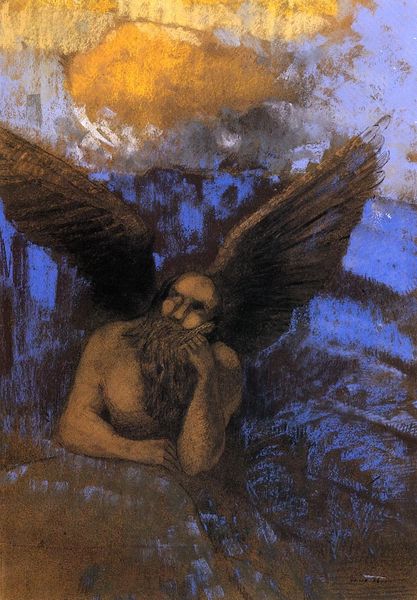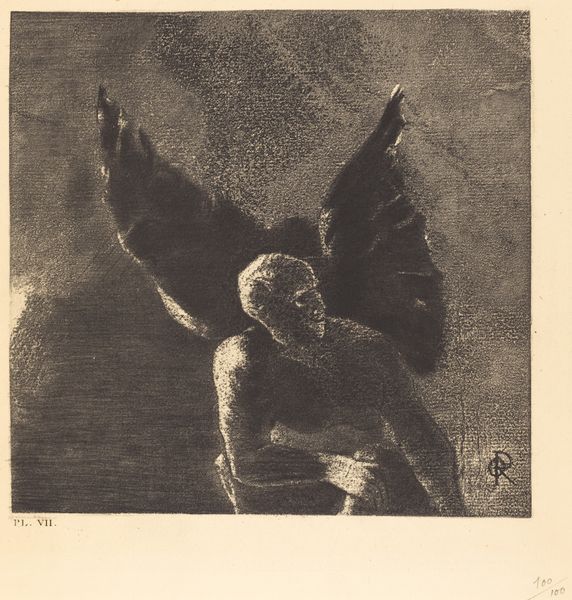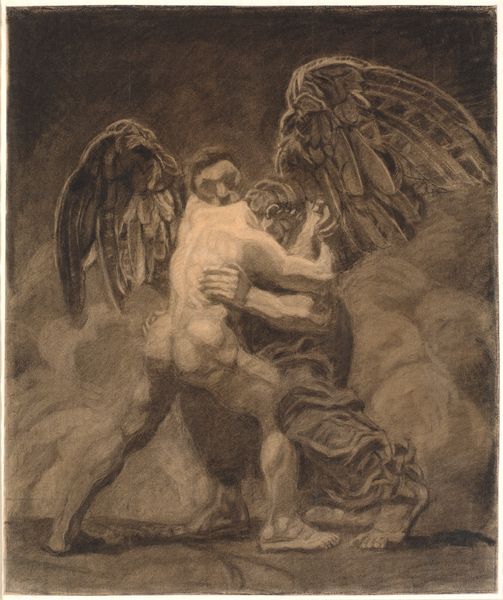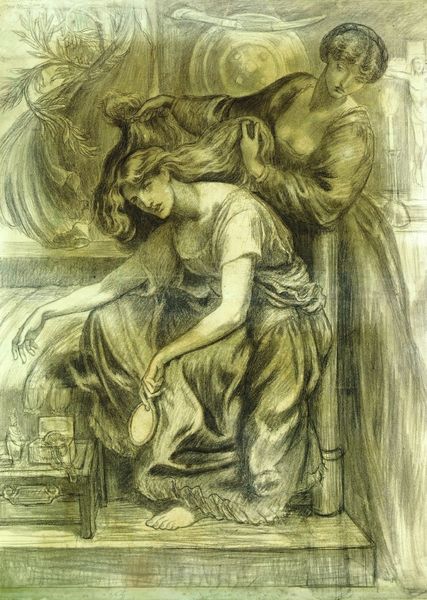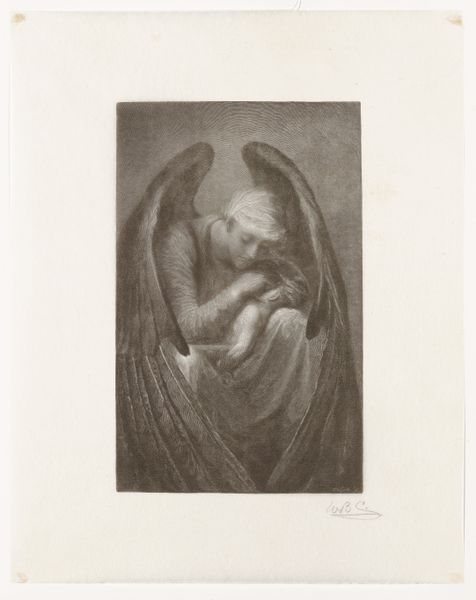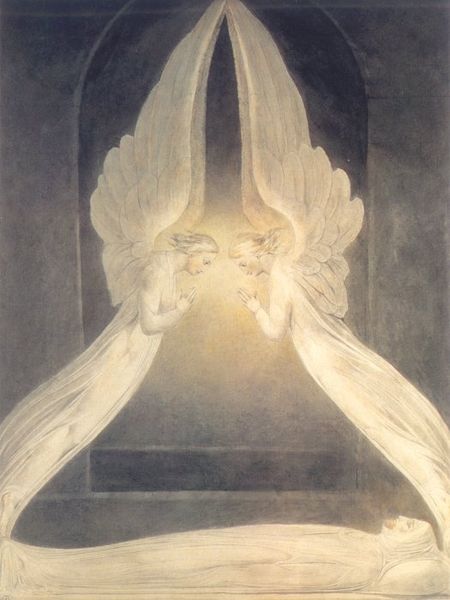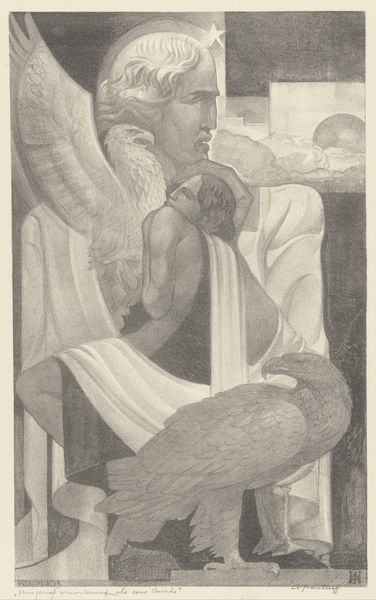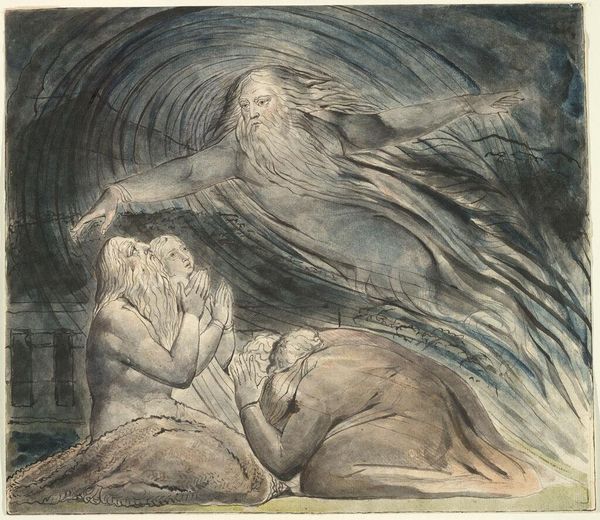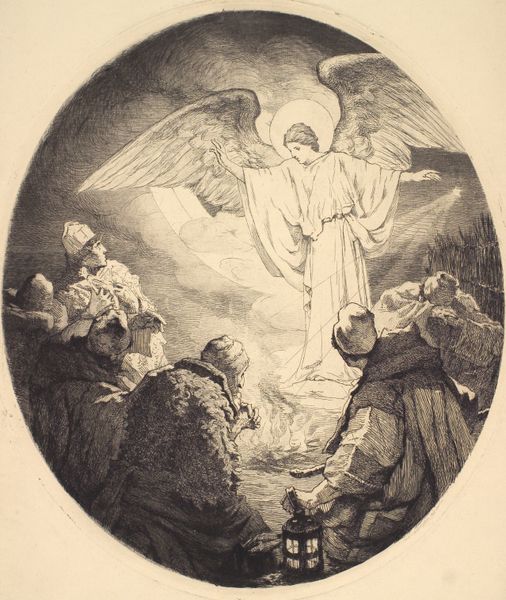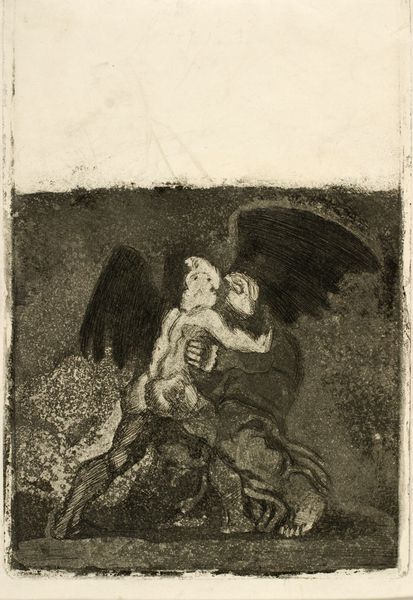
drawing, print, etching
#
portrait
#
drawing
# print
#
etching
#
charcoal drawing
#
charcoal art
#
portrait reference
#
symbolism
Dimensions: 452 mm (height) x 302 mm (width) (bladmaal), 178 mm (height) x 140 mm (width) (plademaal)
Curator: Oh, what a striking image. The mood, before anything else, is just palpable… This must be Frans Schwartz's "Christ in Gethsemane," completed in 1901, held here at the SMK. It's an etching, isn't it? The crosshatching feels so deliberate. Editor: Etching it is – on paper, mind you. I'm drawn to how Schwartz uses line to delineate both the figure of Christ and the supporting angel. Think about the labor involved – the painstaking work of layering those marks on the plate to create depth and emotion. It's quite a somber print; the crosshatching builds this dense darkness around them both. Curator: Exactly. And that's what gets me… the raw, exposed vulnerability in Christ's posture. Those clasped hands, the bowed head – the halo almost seems to weigh him down, not uplift. He’s human, utterly and painfully so. He looks trapped in this scene. It's heavy stuff, isn't it? Almost oppressive, the angel does give a measure of protection to Kristus but he himself seems heavy ladened with worry and his fate. Editor: Oppression wasn't accidental I think. The materials themselves - the acid biting into the metal, the repetitive, physical action of the artist - speak to a kind of material weariness. Etching is after all, not just making a picture; it's the record of process and production. Symbolism was also taking Europe and the nordic countries by storm. This makes it even more of the moment, as Schwartz takes religion into the more dream-like territory that etching excels at conveying Curator: True. I think also about the social context here. Remember the end of the 19th century and start of the 20th and what they wanted the man Kristus to signify: what an impossible burden for those around him in a way... This print seems to reject any triumphant image of Jesus, leaving him kneeling, alone, and burdened instead. Editor: It does force us to consider how suffering, and maybe especially this symbolic suffering, is made real through labor. Even spiritual ecstasy has a process, an exchange between creator and material. Makes you consider where your own raw material sits too as an artist doesn't it? What parts of yourself you sacrifice to the artistic plate in front of you... Curator: Absolutely, there is this element to it, as we gaze back into the soul and pain that Schwartz makes very apparent with this dark artwork. I never seem to escape seeing some truth about human endurance. Editor: Truth or consequences… maybe. Well, thanks, curator, that’s left me something new to think about, I suspect.
Comments
No comments
Be the first to comment and join the conversation on the ultimate creative platform.
